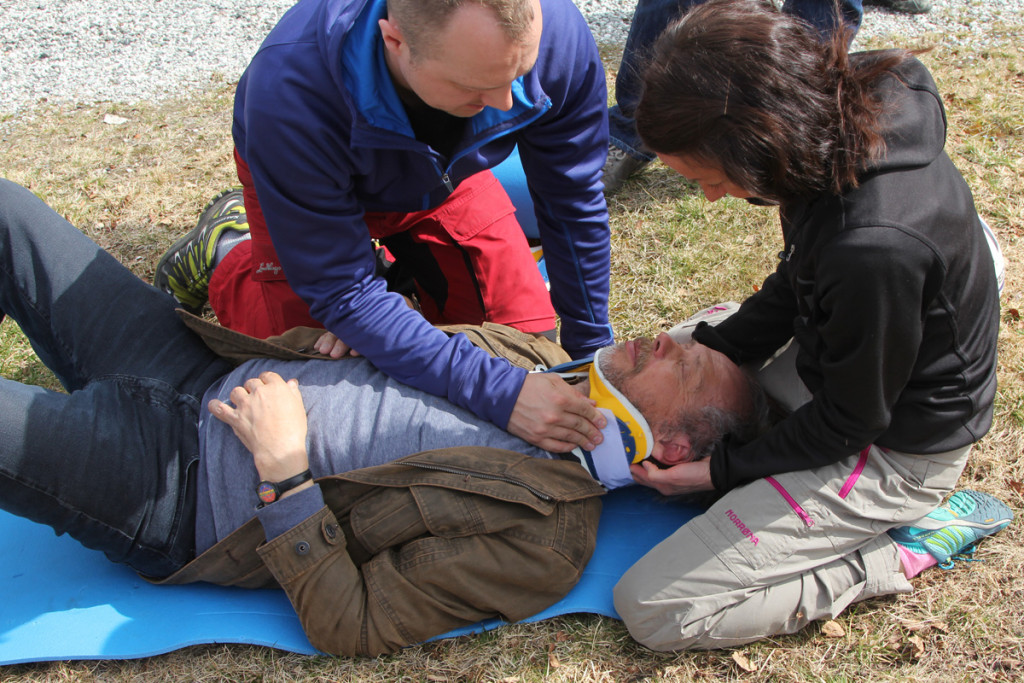
The need to enforce safety for Sami people in their work, as well as for fishers, hikers, skiiers etc. is important. Health professionals often struggle with getting resources in time to territory with little to no infrastructure. That’s why project “Emergency Care in Sparsely Populated Areas” was started. The project seeks to educate people on what to do while awaiting advanced care, and increases the ability to give first aid adequately.
The idea is to educate persons working in the mountains or the wild, so they can give first aid and take the correct measures to save lives according to the internationally established ABCDE model. Helicopter companies and nearby villages in the woods and mountains are equipped with anatomical charts and basic equipment in medipack form. A system that allows contact and manouvering of resources is assisted by SOS alarms.
District doctors in the hinterland give medical advice to people at the scene of injury via cellphone or satelite telephone. When the helicopter lands, the assistance based on the anatomical chart and equipment continue within the helicopter, until advanced help can be accessed. The entire initiative is coordinated via SOS alarm. Helge Brändström is a readiness doctor at the Municipality’s emergency and catastrophe medical center. AKMC leads the project, and AKMC is also the one driving the project along with GMC (Rural Medicinal Center/”Glesbygdsmedicinskt centrum”) in Storuman. Initially, certain individuals living in sami villages, working helicopter companies, health centrals, and cottage hospitals.
A few select persons at Sami villages, helicopter companies, mountain guards, health centers and cottage hospitals have recieved basic training. At the same time many doctors and nurses have been educated so that they may instruct others within sami villages, helicopter companies, mountain guards and healthcare personell. Helge Brändström says; “It’s a simple way to increase safety in the rural Swedish hinterland by doing something cost effective and constructive. Interest among the Sami is great as well.”
About the Project
During a trial period of two years, Västerbotten County Council will be employing this concept for emergency care within rural Sweden. The project is being driven together with the municipalities in Norrbotten and Jämtland’s county.
Contact:
Helge Brändström, MD,
Contact:
Helge Brändström, MD, head doctor of anasthesiology and intensive care
Emergency- and catastrophe centrum, AKMC, Northland’s university hospital
Telephone: 090-785 38 58 or 070-319 07 95,
E-post: helge.brandstrom@vll.se


